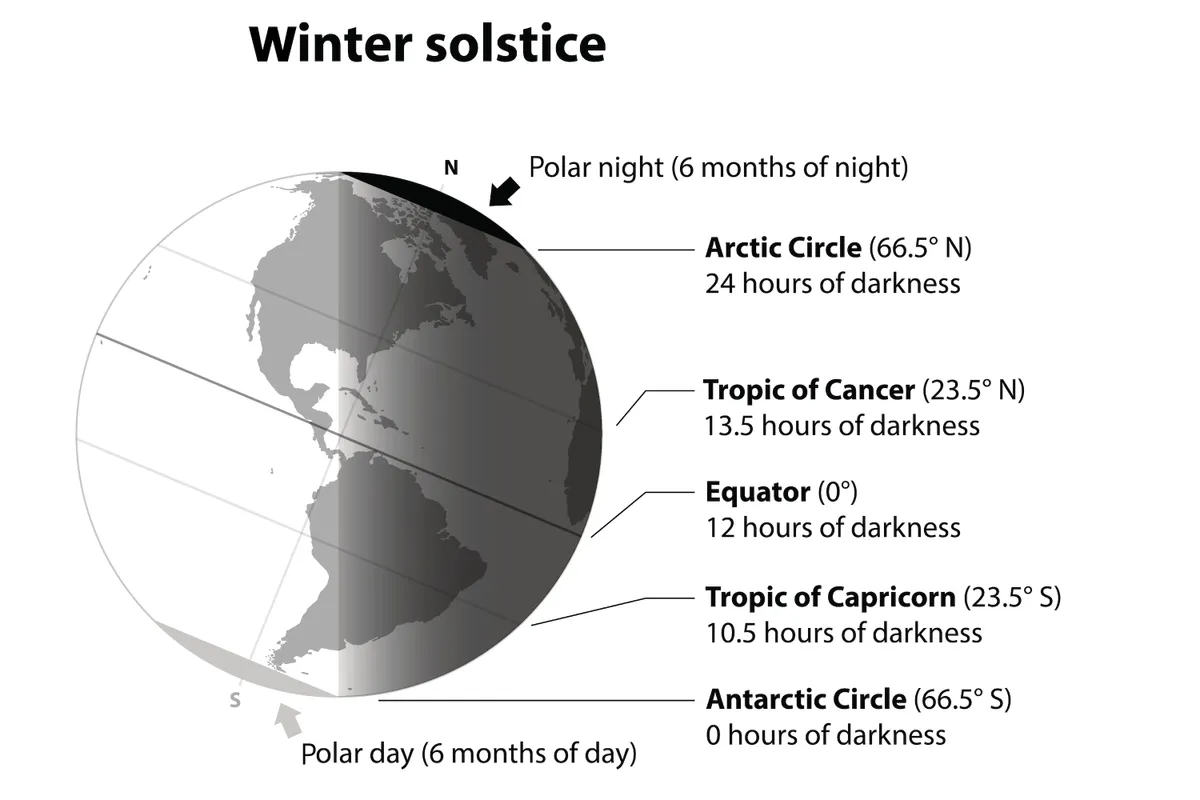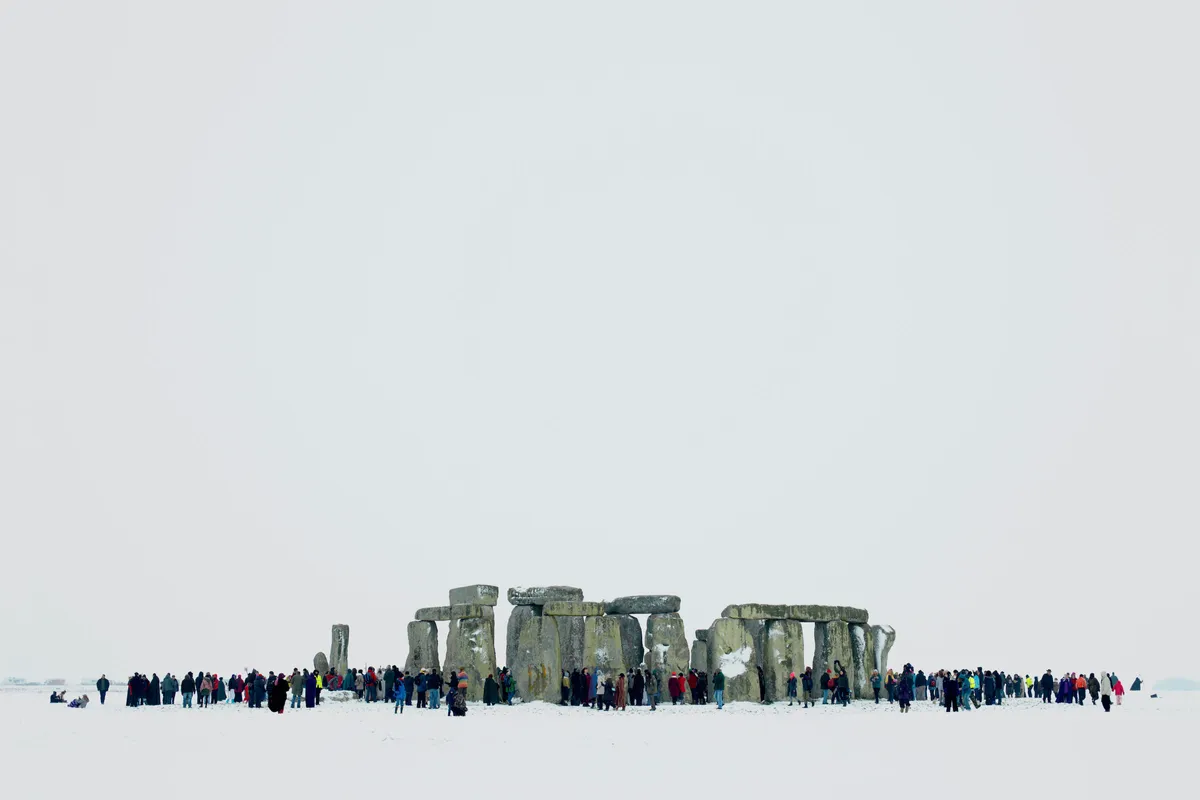Winter solstice 2022 is here! For most of us in the northern hemisphere, the drop in temperature over the last few weeks has become apparent; frosty mornings and cold air is the order of the day. Marking the first day of astronomical winter, the winter solstice lays claim to the shortest day of the year, but it’s also the date after which the Sun starts to make a welcome return.
But when exactly is the winter solstice? And how does it affect the different latitudes? Read on for answers to this and more.
For those who missed it, you can check out our fantastic gallery of traditional midwinter celebrations from around the world. If you’re hoping to make the most of clear nights this winter, why not plan ahead with our full Moon UK calendar and astronomy for beginners guide?
When is the winter solstice in 2022?
The winter solstice is on Wednesday 21 December 2022. It marks the first day of astronomical winter, and the precise time of the solstice will be at 9:47pm GMT. This differs from meteorological winter, which always begins on 1 December, every year.
There are two solstices every year, one in December and one in June.
What is the winter solstice?
The winter solstice is when the Sun reaches its lowest point in the sky, and here in the northern hemisphere, that results in the shortest day of the year. It’s not something that you can see, like a meteor shower or planet in opposition, but rather an event that occurs.
The solstices (and the equinoxes) are the result of the interplay between Earth’s tilt and its orbit around the Sun.
During the winter solstice, the northern hemisphere is tilted furthest away from the Sun, causing it to reach its lowest point visually in the sky. For us here on Earth, this means it takes the least amount of time to cross the sky, and so we get the shortest day (and longest night) of the year. After the winter solstice, the days begin to get longer and the nights shorter.
If the Earth wasn’t tilted, the Sun would remain directly above the Earth’s equator for the entire year, and seasons as we know them, wouldn’t exist, although we may get ‘climate zones’.
What does the word ‘solstice’ mean?
The word ‘solstice’ is the scientific term for this astronomical event that happens twice a year. The word solstice is derived from the Latin sol (sun) and sistere (to stand still). Both at the December solstice and the June solstice, the Sun reverses its apparent annual north-south motion and appears to stand still.
How the December solstice affects the poles
The Arctic and Antarctic circles are located at 66.5 degrees north and 66.5 degrees south, respectively. The latitude of the Arctic circle is essentially the line, above which the Sun never rises on the December solstice, resulting in 24 hours of darkness.

As you move closer towards the north pole, you’re moving closer towards the point on the Earth that is tilted furthest away from the Sun. The winter solstice is the darkest time of the year for the north pole, and during these winter months, the Sun doesn’t rise from mid-November to late January, buffered by a period of twilight on either side.
The opposite is true for the June solstice. In the Arctic, the Sun is above (or on) the horizon at midnight, earning it the popular nickname, ‘the land of the midnight Sun’.
Why does the Sun appear to stand still at the solstice?
At the solstices, the Sun stands still in declination (declination is the number of degrees north or south an object is from the celestial equator). At the winter solstice, it has reached its lowest point in the sky, and from now until the summer solstice, its lowest point begins to rise a little more each day. This means it appears to ‘stand still’ for a few days, while its progress in the sky changes direction.
Where is the Sun during the solstice?
During the winter solstice, the Sun is at its furthest point south of the celestial equator and remains at almost the same declination for around two weeks. This is why the Sun appears low in the southern sky as seen from the northern hemisphere, and high in the northern sky as seen from the southern hemisphere (where it's summer).
During the winter solstice, the Sun is directly over the Tropic of Capricorn, a line of latitude that circles the Earth at approximately 23.5 degrees south of the equator. To use the correct terms, therefore the declination of the Sun is at -23.5 degrees, and its right ascension is 18 hours.
If you like taking photos of your shadow, mark your calendars – the noon Sun on the day of the winter solstice will cast long shadows, cloud cover permitting.
What’s the difference between a solstice and an equinox?
Think of solstices and equinoxes as opposites, the difference between them being the number of daylight hours that we receive on Earth. The two solstices in December and June mark the shortest (winter solstice) and longest (summer solstice) days of the year, whereas, at the two equinoxes, the days and nights are of almost equal length.
During the winter solstice, the northern hemisphere reaches its maximum tilt away from the Sun, so the Sun appears at its lowest in the sky, giving us the shortest day of the year.
During the summer solstice, the northern hemisphere is at its maximum tilt towards the Sun, so the Sun appears at its highest in the sky, resulting in the longest day of the year. However, during the equinoxes, the Sun is in the middle of the two solstices and is positioned directly above Earth’s equator.
Dates and times of the winter solstices, GMT
2022: 21 December, 9:48pm
2023: 22 December, 3:28am
2024: 21 December, 9:20am
2025: 21 December, 3:03pm
2026: 21 December, 8:50pm
2027: 22 December, 2:43am
2028: 21 December, 8:20am
2029: 21 December, 2:14pm
2030: 21 December, 8:09pm
Happy winter solstice! What does Stonehenge have to do with it?
The winter solstice is one of the oldest known winter celebrations. Not only does it mark the changing of the seasons, but it marks an end to the long winter nights.
Although Stonehenge is one of the world’s most famous prehistoric monuments, remarkably little is known about these ancient standing stones. They have, however, become synonymous with the solstices, and it’s difficult to avoid news of throngs of people flocking to the monument in mid-winter and mid-summer. But they have good reason, and have done so for millennia.

Most archaeologists believe that Stonehenge was erected as a giant astronomical calendar, as the standing stones are oriented towards the rising and setting Sun at the solstices. However, there is some debate as to whether they were originally built for a specific solstice, or both.
At the winter solstice, the Sun would have set between two uprights, however the effect is somewhat lost today as one of these stones has since fallen down. Laser analysis of these stones has revealed that they were carefully shaped using hammerstones, creating vertical sides that perfectly framed the movement of the Sun.
This year, because the precise time of the solstice occurs at 9:48pm on 21 December (i.e., after the Sun has set), the winter solstice will be celebrated at sunrise on 22 December. But, if you don’t fancy heading out into the brisk winter morning, you can livestream the event over at English Heritage.
Read more:
